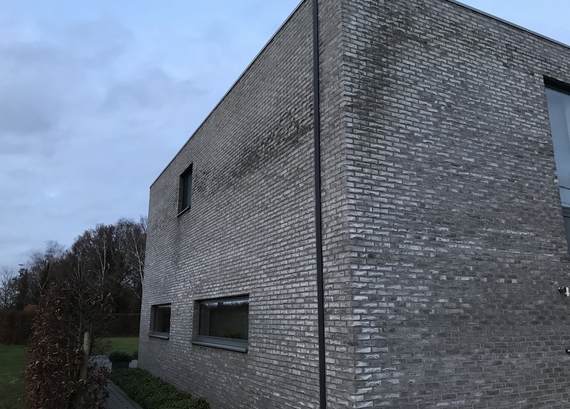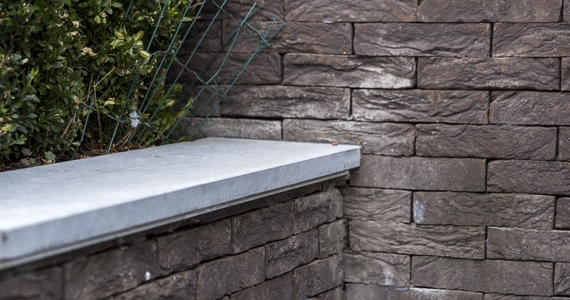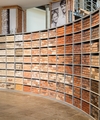
What is efflorescence?
Efflorescence is a white discolouration sometimes visible on brickwork facades. It tends to appear when a wet brickwork facade starts to dry out. Water evaporates through the brick face and deposits water soluble salts, naturally present in the brick and the mortar, on the face of the brick as white discoloration.
Types of efflorescence
There are three types of stains which fall into two categories:
- Primary efflorescence: Salt efflorescence
- Primary efflorescence: Lime efflorescence
- Secondary efflorescence: Gypsum efflorescence
Primary efflorescence - Salt efflorescence
This type of efflorescence mainly occurs when there is excessive contact with water during bricklaying or jointing. Water-soluble compounds are transported to the surface through the pores of both the brick and the joints. Upon drying, the salts crystallise and form visible white hazing/deposits.
This white efflorescence is the most common and is quite harmless. It in no way affects the quality of the bricks or brickwork.

Since this form of efflorescence is soluble in water, it is washed away naturally by rain and wind. This efflorescence will therefore gradually dissolve in the rainwater and eventually disappear completely.
The process can be speeded up by regularly wetting the affected bricks with lukewarm water (from a garden hose). After repeating this process several times, the efflorescence will gradually decrease and even disappear.
Primary efflorescence - Lime efflorescence
Primary efflorescence - Lime efflorescence or Lime Run off as it is also described, mainly appears in fresh masonry when there is excessive moisture. It is usually seen first on the mortar joints and can then travel down the face of the bricks.

In good weather conditions CO2 from the air converts the excess lime in the mortar into non water- soluble Lime and cures. However, under adverse wet conditions, Calcium oxide CaO from the mortar will react with water to build calcium hydroxide Ca(OH)2, which is extremely water soluble and can then spread throughout the masonry. The calcium hydroxide Ca(OH)2 then reacts with CO2 from the air to form the water insoluble calcium carbonate CaCO3 (Lime), which is expressed as Lime staining on brickwork façades. At an early stage, Lime efflorescence/Lime run off can be removed very easily using water or brick cleaner but if it is left it will have to be professionally removed with special cleaning products.
Secondary efflorescence - Gypsum efflorescence
Secondary efflorescence - Gypsum efflorescence is usually a white-grey semi-transparent discoloration that appears months or several years after the construction has been completed. It is normally visible on the south west elevation of a building and due to its grey colour, it is more visible on the brick than on the mortar joints. Unfortunately, as a stain it is very stubborn and not soluble in water or acid and in the majority of cases, can be attributed to Gypsum.
Gypsum is added to cement as an auxiliary substance to help with curing. Due to the effect that carbon dioxide has on mortar, it tends to cause excess Gypsum to be released from the cement. The additives in the mortar then transport the Gypsum to the face of the brick pores where it crystallizes. Rain and wet conditions stimulate this process, which usually happens when an incomplete brick facade is left exposed to rain followed by very quickly by heat from the sun, causing the Gypsum to crystallize at the face of the brick pores.
Prevention is better than cure
Efflorescence can largely be prevented by following good practice and brick manufacturers recommendations on site. Avoiding saturation of brickwork during and after construction will limit the effects of efflorescence and other stains experienced in brickwork. Vandersanden’s coated facing bricks also offer a solution to preventing Secondary efflorescence – Gypsum efflorescence.



